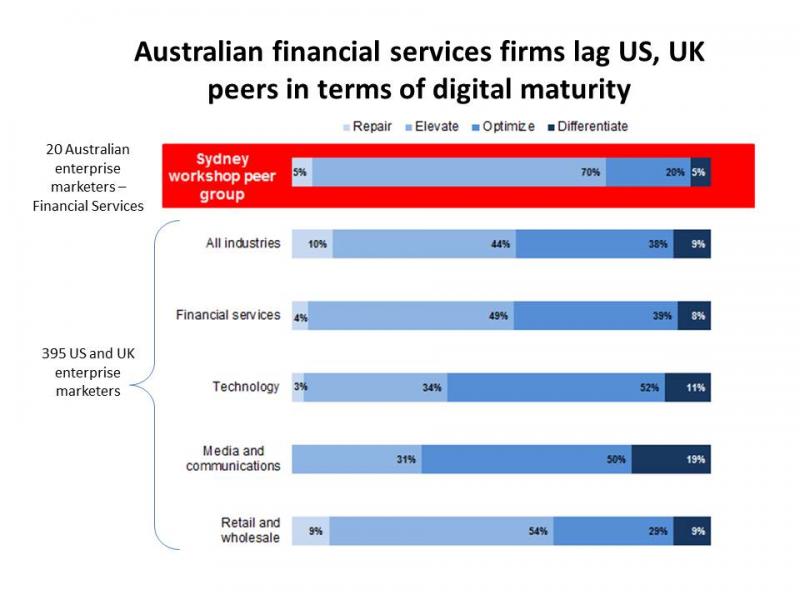Australian Financial Services Get Going To Improve Digital Customer Experience
I had the pleasure of conducting a Digital Maturity Assessment workshop with a colleague from Forrester Consulting for about 20 companies in Sydney recently. The majority of participants were from the Australian financial sector, with heavier representation from marketing departments than technology management. While the session was an abridged one intended to discuss, understand, and determine where the participants were on their digital business journey, it was productive and revealed that:
- Participants knew what to do with digital business transformation, but struggled with how. Participants had started on the digital transformation journey, but needed to address cultural and organizational gaps to fully drive transformation. These issues include who owns the digital transformation agenda (does it sit with the CIO or CMO?), how to bridge the communication chasm between the CIO’s department and the lines of business, and how to measure results to drive transformation in a positive direction.
- Most participants were at the Elevate stage of the maturity model. The model measures an organization’s digital maturity across four dimensions (Organization, Culture, Technology, and Metrics) and provides digital executives with a benchmark of sophistication and effectiveness across these dimensions. This helps us locate where firms are in the four stages of maturity: Repair, Elevate, Optimize, and Differentiate. Our quick assessment found that participants were mainly at the Elevate stage (see figure), meaning that they are becoming cross-functional leaders. They have increased accountability for new touchpoints such as social, mobile, and branch or store technology. To progress to Optimize, they will need to start embedding digital into the business to personalize the customer experience — but that will take time.
- Customer obsession is the key differentiator in any digital effort. Forrester believes that being customer-obsessed will inform any digital business strategy. The takeaway from the workshop is to start your customer obsession by shoring up the digital functions of strategy, governance, and execution at your business, regardless of its organizational structure. For example, the strategy function answers the question of how digital is changing your business — not questions about program, media, or website strategy. Multiple models work for managing digital strategy, including the idea of whether to have a chief digital officer (CDO) to drive the function or not.

The workshop revealed that Australian financial firms may lag their global peers on the maturity stages, but they understand the need to integrate both sides of a digital strategy: digital customer experience and digital operational excellence, which helps vision setting and execution of that vision. For others, it might be fun to take Forrester’s Digital Readiness test — I’d love to hear where you are on the digital transformation model.